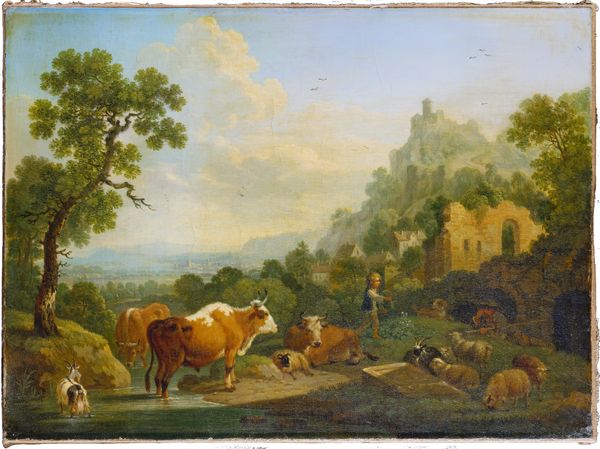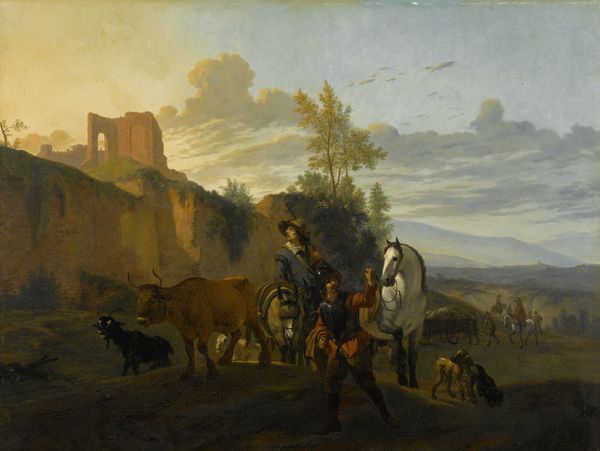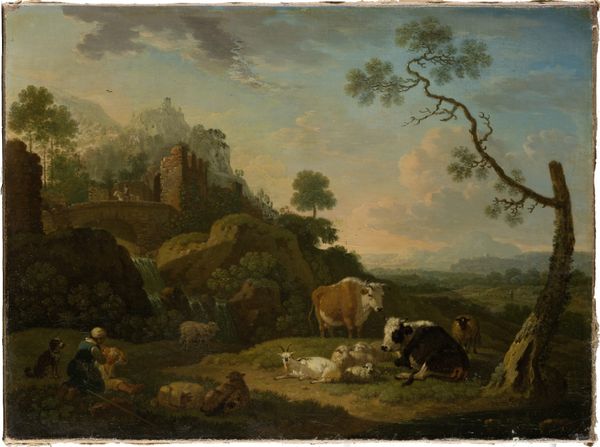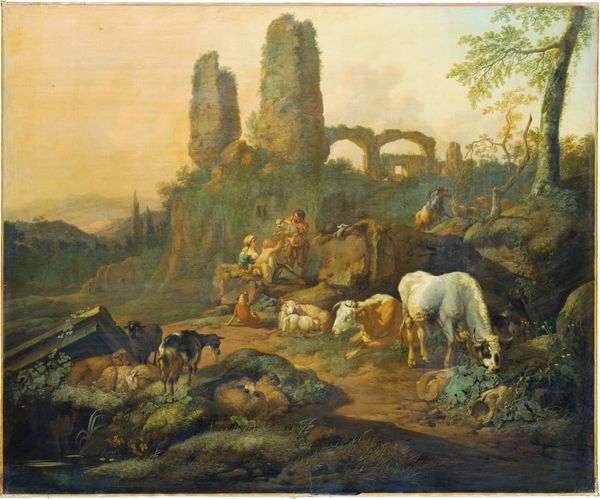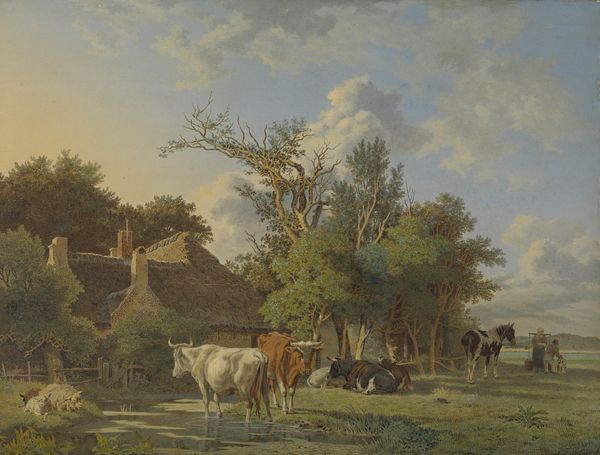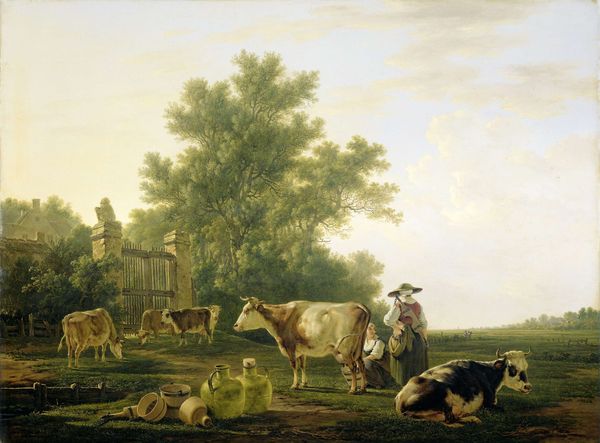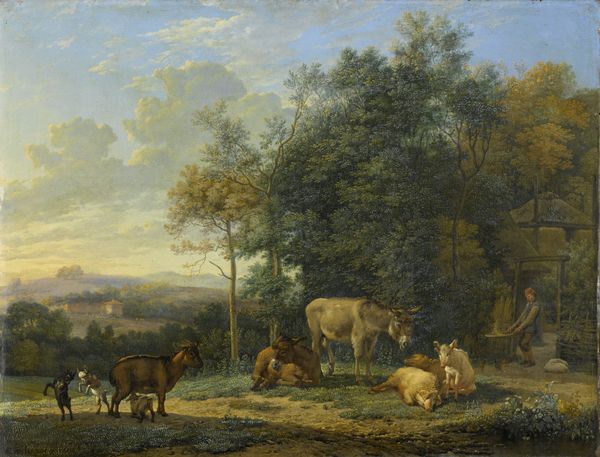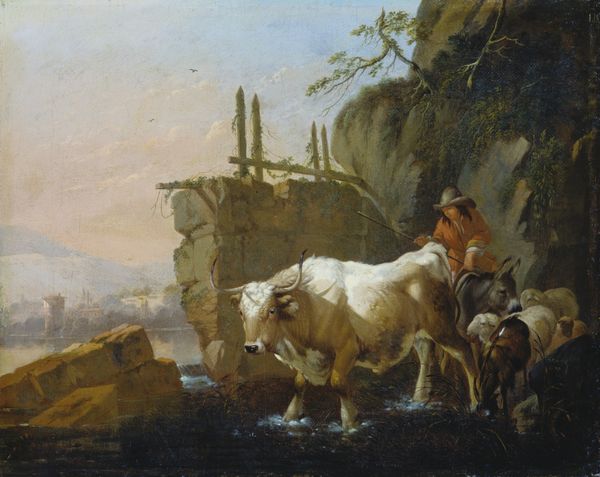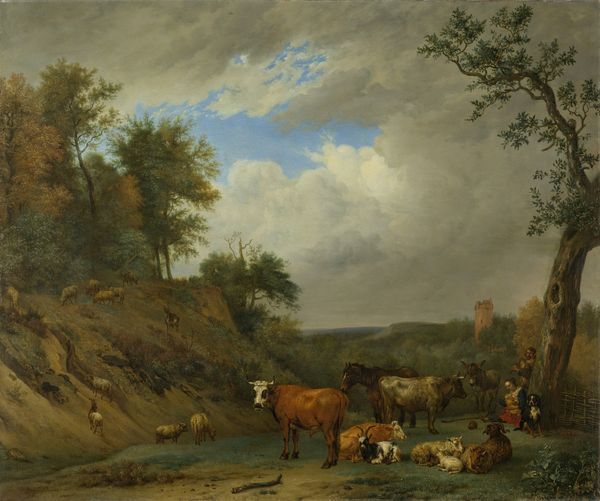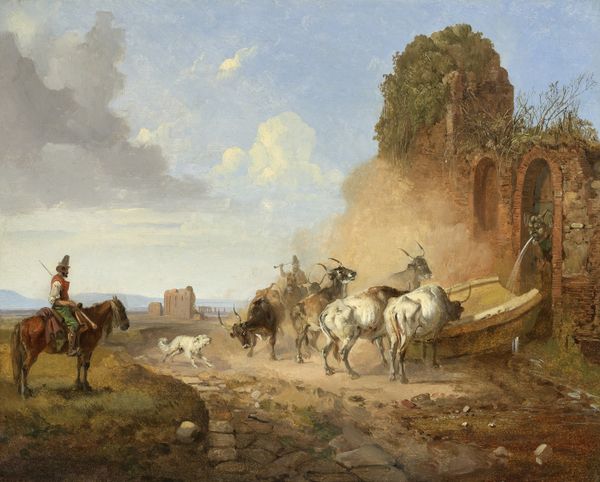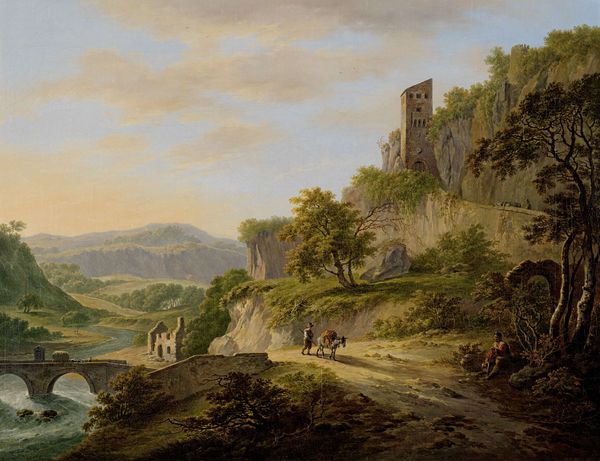
painting, oil-paint
#
gouache
#
water colours
#
painting
#
oil-paint
#
landscape
#
figuration
#
oil painting
#
romanticism
#
genre-painting
#
academic-art
#
watercolor
#
realism
Dimensions: height 72.5 cm, width 96.5 cm, depth 7.1 cm
Copyright: Rijks Museum: Open Domain
Curator: This is Jacob van Strij’s “Landscape with Cows near a Ruin," an oil painting from between 1800 and 1815. Editor: It strikes me as melancholic, almost elegiac, in its subtle depiction of decay, seen in both the architecture and perhaps in that withered tree. The palette is also subdued, fitting the pensive mood. Curator: Precisely. The composition reveals a masterful balance between the classical ruin on the left and the natural landscape to the right, unified through color and tonal value. The figures, almost genre-like in their depiction, serve to further animate the scene. Consider the application of the impasto; it builds texture that captures the atmospheric effects. Editor: And consider too what the artist includes and omits. It seems as if it makes a romanticised comment on land enclosure; with rural families now working the land or relegated to begging. The picturesque masks very real social changes, creating a sanitized version of reality for the rising middle classes. Curator: Interesting, you see the ruin and rural setting as a politically charged site. I view it primarily as a study in contrasts: nature versus artifice, permanence versus ephemerality. Editor: But can we separate those binaries? Aren’t they always mutually constitutive? The very idea of the “picturesque” was cultivated as a way to deal with rapid social and economic change. Van Strij and others weren’t just passively painting pretty scenes. They actively played a role in shaping perceptions of rural life during a turbulent era. And for whom were they creating these views? Not the rural folk. Curator: Perhaps, yet it’s important to acknowledge the pure formal arrangement within the painting: how the lines of the architecture lead our eye, how the muted palette generates a soft diffused light. And that framing—almost Claudian—focuses our vision. Editor: True, the painting performs important aesthetic labor even as it negotiates wider ideological issues, perhaps unconsciously so. I’ve learned from seeing how you appreciate the purely visual qualities of the work, while I hope I’ve reminded us of art’s necessary ties to the world beyond the frame. Curator: Indeed. By seeing both the form and context we can start to grasp the power of the work.
Comments
No comments
Be the first to comment and join the conversation on the ultimate creative platform.
